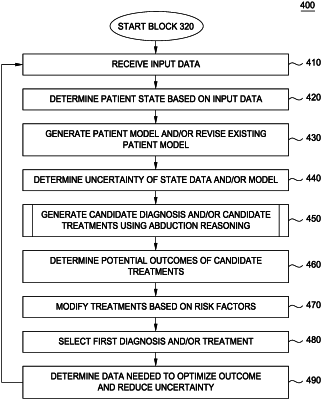| CPC G16H 50/20 (2018.01) [G06N 20/00 (2019.01); G16H 10/60 (2018.01); G16H 50/50 (2018.01); G16H 10/40 (2018.01); G16H 50/30 (2018.01); G16H 70/20 (2018.01); G16H 80/00 (2018.01)] | 20 Claims |

|
1. A method comprising:
generating, by a computing system based on data received from a plurality of data sources, a data model describing a patient, wherein:
the data comprises medical history data of the patient and observation data received by the computing system during observation of at least one medical professional,
the observation data comprises: (i) audio data recorded by a microphone of the computing system, and (ii) image data captured by a camera of the computing system, and
the data model comprises a sequence of vectors collected over time, each respective vector in the sequence of vectors capturing attributes of the patient for a respective time;
generating, by the computing system and based on the data model applied to the received data, a plurality of candidate diagnoses for the patient by applying abductive reasoning to reduce uncertainty in the data model, wherein the uncertainty is based on unknown data in the data model;
generating, for each respective candidate diagnosis of the plurality of candidate diagnoses, a respective score reflecting confidence the respective diagnosis reduces uncertainty in the data model;
executing, by the computing system, for a plurality of candidate treatments, a respective plurality of simulations based on the data model, comprising determining predicted uncertainties with respect to a future state of the data model; and
identifying a first candidate treatment of the plurality of candidate treatments based on the respective plurality of simulations executed for the first candidate treatment, comprising determining that the first candidate treatment reduces the predicted uncertainty of the future state of the data model below a threshold.
|